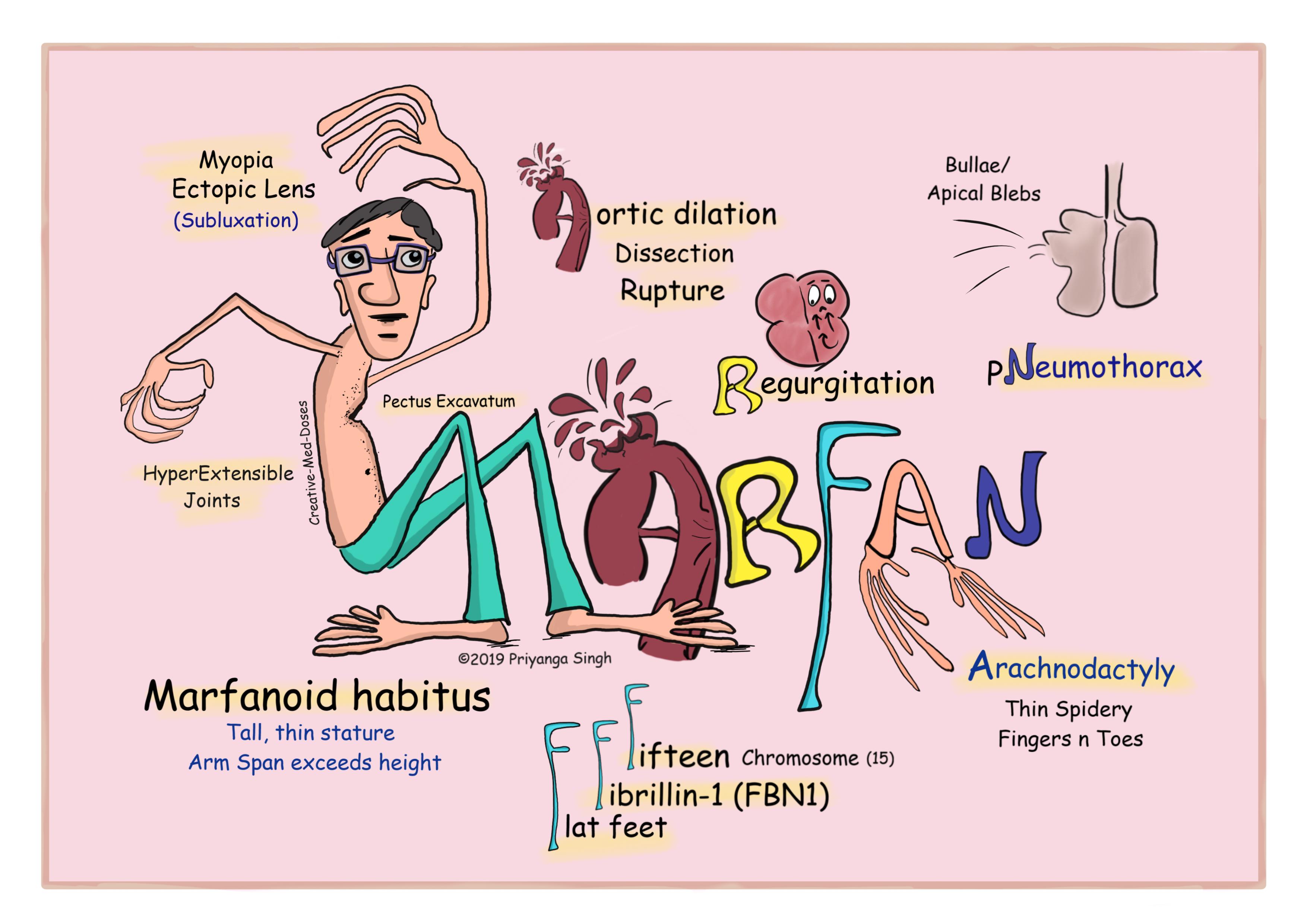Marfan Syndrome quick review
Marfan syndrome is an autosomal dominant disorder causing defect in an extracellular glycoprotein called fibrillin-1. Fibrillin is encoded by the FBN1 gene on chromosome 15.
Pathogenesis
Fibrillin is secreted by fibroblasts and is the major component of microfibrils. Microfibrils serve as scaffolding for the deposition of tropoelastin, an integral component of elastic fibers. Microfibrils are abundantly found in the aorta, ligaments, and the ciliary zonules that support the ocular lens. loss of microfibrils gives rise to abnormal and excessive activation of transforming growth factor-β (TGF-β), because normal microfibrils sequester TGF-β.
Excessive TGF-β signaling has deleterious effects on vascular smooth muscle development and the integrity of extracellular matrix. This leads to bone overgrowth (tall and thin stature) and aortic dilation, that is why in prevention of cardiovascular disease, use of drug which reduces blood pressure and inhibit TGF-β signaling is recommended.
...

...
Clinical Presentation
Skeletal abnormalities
- Marfanoid habitus- tall and thin stature, long extremities, arm span exceeds height.
- Arachnodactyly- long fingers and toes
- Hypermobile joints
- Flat feet
- Pectus carinatum or excavatum
- Scoliosis
Cardiac Abnormality
- Mitral valve prolapse and regurgitation.
- Aortic Dilation, Dissection and Rupture due to Cystic medial necrosis. Aortic rupture is the most common cause of death.
Ocular abnormality
- Bilateral dislocation, or subluxation, of the lens secondary to weakness of its suspensory ligaments.
- Ectopia lentis, particularly if bilateral, is highly specific for Marfan syndrome.
Diagnosis
- Based on clinical presentation and typical marfanoid habitus.
- Genetic testing is confirmatory.
- Transthoracic echocardiography- mitral valve prolapse and aortic dilation is noticed.
Treatment
- There is no cure for Marfan syndrome, but treatment is targeted to prevent cardiac disease progression and reducing complications.
- β-blockers or angiotensin receptor blockers reduces blood pressure and thus they slow down aortic dilation.
- Patient should avoid high-impact contact sports, strenuous exercise and excessive stress.
- Aortic aneurysm repair should be performed to prevent catastrophic rupture.
Case Scenario
A 23-year-old man with tall and thin built presents for genetic counseling. He also complains of blurred vision. His father and grandfather died of sudden cardiac deaths. His father, specifically, suffered from an aortic dissection and rupture. Slit lamp examination reveals bilateral lens subluxation. His cardiac imaging reveals 5 cm aortic aneurysm. What is most likely diagnosis?
Further Reading https://emedicine.medscape.com/article/1258926-overview
Revision for today https://creativemeddoses.com/topics-list/sheehans-syndrome-postpartum-hypopituitarism/